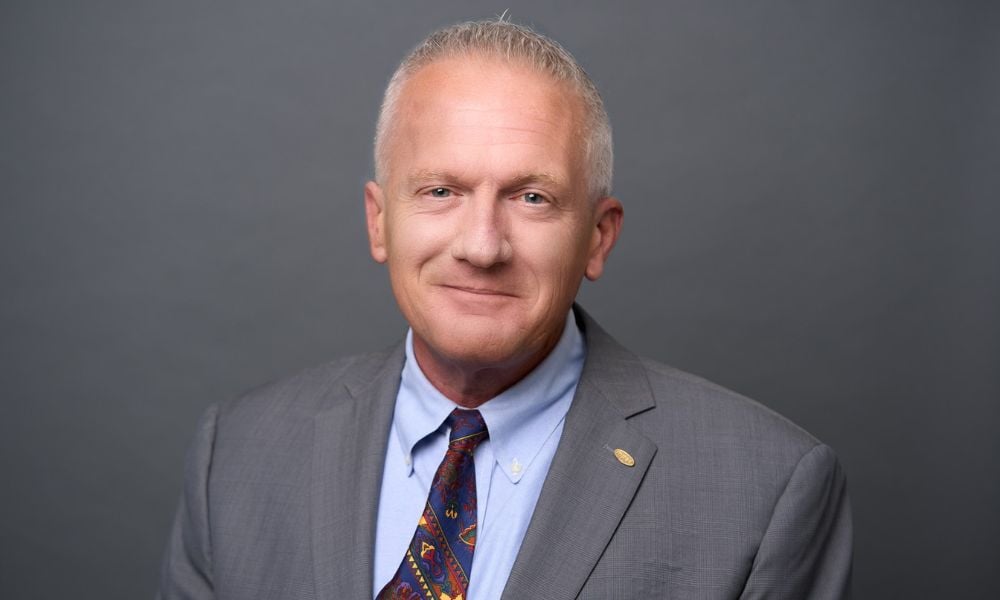HR leader profile: Ed Broderick of MPAC

Like many HR leaders, Ed Broderick didn’t start off pursuing a career in HR. Instead, he began his career in finance working in the automotive industry — but he learned early on that wasn’t the profession for him.
And after hearing more about HR, Broderick decided that was a better path to take.
“I talked my way into a very, very low-level job. And, really, that was great for me because I got to learn so much about the business from the ground floor.”
So, what exactly was the appeal of human resources?
“In the end, you’re helping people or you’re helping people better understand what organizations do. That’s never really changed,” he says.
Broderick is now vice president of human resources at the Municipal Property Assessment Corporation (MPAC) in Ontario. And when he first started in HR, Broderick says HR was often shuffled to the side by the C-suite, “whereas now, we're being invited to the table earlier and have a full seat at the table.”
The HR field is being respected and appreciated much more now, he says, “especially in tighter labour markets [because] employees are expensive — they're a valuable, expensive asset. And I think that we're being heard more often and brought in more often.”
A MPAC, for example, there's rarely something the organization is going to try or do without Broderick or his team not being involved, he says, “in one way or the other, right from the start.”
Career highlights in HR
That’s one of the reasons why Broderick says he joined MPAC, because of “the respect and value they placed on the HR function.”
The organization administers property assessments and appeals of assessment in Ontario, with roughly 1,800 employees working in property valuation and inspection roles, customer relations, legal, information technology, commercial sales, communications, and finance.
Broderick has been with the corporation for 13 years, and has many career highlights to relate.
Take, for example, flex benefits, introduced many years ago.
“It was unheard of in Canada, and we were just trying to launch it, and… that to me was a career highlight, because we literally designed the program, rolled it out across Canada, did a show and tell because we were introducing it to our retirees as well,” he says.
“So it was constant travel, and it was all the way from design and launch.”
Also notable were modern operating agreements when it came to unionized employees, along with the introduction of an employee family assistance program (EFAP), says Broderick.
“They weren't always a big thing either, and I was able to introduce those to a new employee group that never had them before where I was, and convinced us that it was a good investment.”
Broderick and his team’s efforts have paid off, with MPAC being recognized as a top employer in the GTA for several years. The organization was recognized based on several criteria including health and financial benefits, family-friendly policies, and vacation policy and paid days off.
A focus on equity, diversity, inclusion and accessibility (EDIA) has also been important to Broderick, who adds they have done a lot in this area, but “we still have a lot to do.”
HR priorities for the year ahead
Going into 2024, Broderick says HR has several priorities at MPAC, such as recruitment.
“We want to make sure there's a steady pipeline of talent coming in; you always want to make sure that any open requisitions are filled — and if they're not, why aren’t they filled?”
They have also introduced a workforce analytics branch to HR, he says.
“The more we find out, the more we want to know. And we're really trying to look ahead at ‘Where is the labour market going? And where are we going?’ So we're not at the end, panicking last minute, looking for people. We'd rather figure that out sooner than later.”
MPAC is also focused on figuring out how people are going to work for the next few years, such as the hybrid approach and a remote workforce.
“Some of the roles we would have traditionally filled only in the GTA that would have had to be around head office, we can now look elsewhere at different markets,” says Broderick.
Communication and culture are also continuing to be priorities for HR, he says.
“The amount of communication we do, and our transparency is just amazing. The comms team does great work helping make sure every employee is informed. It's one of the things that we took advantage of, I guess, throughout the pandemic, was we increased the amount of communication we had... in fact, I thought at some point in time, maybe we don't have to do this as much, but the employees love that.”




